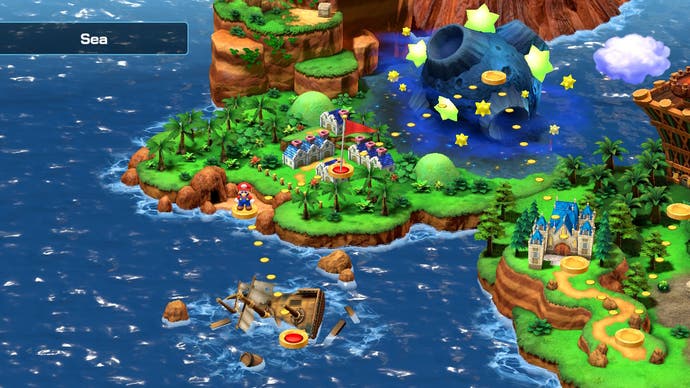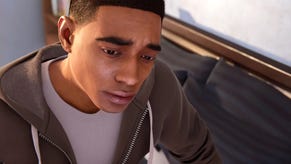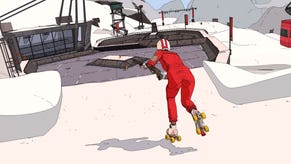Why gaming is so important to players with chronic pain
"None of this is simply about being able to play a game."
How do you communicate what it's like to live in a body that's become hostile and cruel? It's a question that haunts the writing of a piece like this. In the imprecise language we possess to describe a spectrum of pain that is just as inexact, it's almost impossible to make people whose pain is only ever passing understand what it's like to live with a pain that is all-encompassing and never leaves.
"I think unless you've experienced it yourself," Kolo Jones, a content creator who works under the name helloitskolo, says, "it's very hard to appreciate the isolation and exhaustion and boredom of being disabled."
As Kolo suggests, chronic pain is about more than pain. It exacts an existential toll as well as a physical one. It's from under this umbrella of chronic pain that we really begin to understand how important video games can be as a distraction, as an escape, and as a balm to, in our cases, a literal world of hurt.
Though how we speak about chronic pain is often imprecise, talking to gamers with chronic pain crystallises themes within the disorienting diapason of our agony. Hands, backs, the stiffness of inertia, a need to be supine, and more: threads of consistency wind through gaming with chronic pain that bely the imprecision of our ability to describe it.
"My primary problem is gripping; gripping and button-mashing," Kolo says, though inflammation and pain in her hands are only part of a web of conditions that also affects her spine and joints. Arevya, an accessibility advocate and content creator, talks about how, "movement or stillness over a long period of time will make my body, and especially my hands, hurt, either because they stiffen up, or the movement sort of irritates my joints."

"Hurt" here is a misnomer born of the inadequate way in which we translate our pain into English. It's not hurt like knocking one's elbow or stubbing a toe. It's our immune systems turning on us, our joints and vertebrae slowly fusing together, our nerves no longer working silently - all bundled in a paradox in which movement and rest can both cause pain.
"My own autoimmune [sic] system is attacking my body, mainly my spine, which causes pain throughout my entire body," says Rebecca, a freelance writer who streams as EntityofJustice, her joints "become stiff, hard to move, and extremely warm to the touch from the inflammation."
Where the able-bodied rarely take note of their bodies and how fragile they truly are, we are profoundly aware of every limb and joint and fibre at all times. Even when the pain is relatively small, it is simply part of an ongoing process of our bodies screaming in agony.
"Being in small amounts of pain may not prevent you from doing things," Rebecca says. "That small amount stacks up, like a molehill that keeps building up dirt until it's the size of a skyscraper. People find it hard to understand why just sitting at a desk and typing can make it hard to do little things like clean your apartment or brush your teeth or take out the garbage or empty the dishwasher, but when your life is a constant build-up of pain and mental anguish, when you get those days where you feel suffocated, sometimes you have to sacrifice the little things just to keep yourself breathing."
On those days, gaming, if we can do it, becomes an invaluable distraction. For most, gaming is simply plugging in and playing. For us, it's more complex. Both Kolo and Arevya use the Microsoft Adaptive Controller to shift inputs from their hands to their feet. Jarvs, a community manager at Raw Fury, praises the Steam Deck - though it's not designed as an accessibility aid. "I can now curl up in bed and play the games I like to play without needing to be at a desk or in front of the TV," she says.

For many, trying to build gaming setups to allow them to lay down is vitally important, while offsetting some of the pressure on hands and backs is a must. Charities like SpecialEffect - which helped Kolo find a setup that works for her - work to mitigate some of the prohibitive cost of accessibility, though few would disagree with Jarvs' assessment that "needing adaptations to play is tough enough without also needing to rob a bank to afford them."
Nor is any of this contextually curative. "It's my way to try and find a way to play a game that hurts the least amount possible," Kolo says. "It's not possible for me to game pain-free because I deal with chronic pain, and I am always in pain. It's a case of, how do I make it the least painful, and therefore the most enjoyable?"
The cost, the changing configurations as our chronic pain shifts and evolves, even the emotional toll of finding accessible setups - it's not something undertaken lightly. "I don't think I would have persevered with a gaming setup if it wasn't my job," Kolo tells me. "Which is really sad; I hate it."
And the future? That's easy: more features, more assistance, and more ways to let us play. But Arevya stresses this needs to evolve to be more holistic. It may be less daunting to pick a specific point on the spectrum of pain and cater to that, but Arevya maintains that thinking more broadly "also gives you an opportunity to be really creative in the way you are meeting the problems of barriers in your game."
As that approach evolves, so should the transparency with which we present accessibility information. Letting us know where and how accessibility is implemented - and, frankly, where it's not - preferably ahead of time helps us understand whether we can or can't play a game at all before we buy it. When games are shrouded in silence around accessibility, like, for instance, Starfield, it communicates a misunderstanding of what buying a game is. It's never a simple transaction for disabled players. "It's a planning decision," Kolo says. "It's a very scared, lonely decision." It's isolating to see others, especially friends, enjoy a game and not know whether you can play it.
That isolation is a cornerstone of disability, even for those with a strong social circle. We can talk in concrete terms about rest, and pacing, and mitigating exertion through preparation and recovery. But we rarely address that these necessary steps are invariably isolating. Hidden in the cracks of that isolation is a greater stillness than any able-bodied person will ever know. That empty space is easy to fill when you're healthy, but when you're disabled that void becomes a vacuum of pain, fatigue, and more besides that devours activity, punishes resistance, and roots us in place.
It's something we don't talk about enough - even among accessibility advocates - and that's how boring being disabled is, how lonely and frightening that mundanity can be, and how important gaming becomes in mitigating that.
In gaming, we find something stimulating that can arrest that void without making it hungrier. Unless you've experienced that gaping expanse of mundanity, and how much accessibility can pull us from its maw, you won't understand just how important gaming can be.
"I think people kind of pooh-pooh gaming accessibility," Kolo says. "But I think it's really important not to dismiss the huge positive impact that something that you can do yourself, independently, can bring you when you live in a world where there are things where you can't always do them independently."
It's a lack of empathy, I think, that comes from a misunderstanding by the able-bodied of what gaming means to them. Non-disabled gamers will argue the merits of games as art, they'll write books about it, essays about niche gaming subjects, long internet diatribes about its cultural importance. But few have the insight to really see it beyond a hobby. There's little difference between the general way we write about games and write about sport, or art, or anything we understand as culturally important but that has little tangible impact on the world around us. I know this because, before the migraine from which I write this descended almost a decade ago, I was likely the same.
The context that's missing, and missing in particular from discussion about accessibility, is that none of this is simply about being able to play a game. Pain is as inscrutable as it is universal, and yet chronic pain places us better than most to understand the more enigmatic qualities of gaming. It's not about what gaming means to our wider culture, it's not about what it means as art, instead it's about what it means to us. Gaming is a lifeline, it's about fellowship and belonging in our most isolating moments, about escape - even if only for a little while - from the pain, about distracting us from bodies that are callous to our own wellbeing. It's not about play. When you're in pain, gaming becomes a way to live.

















